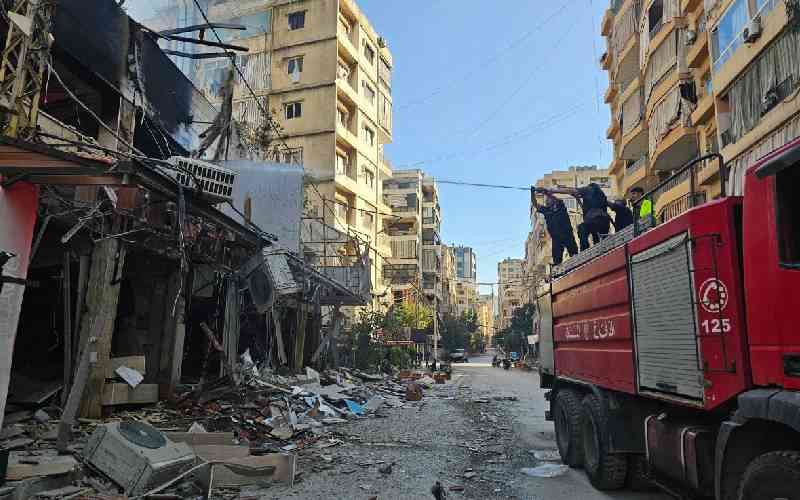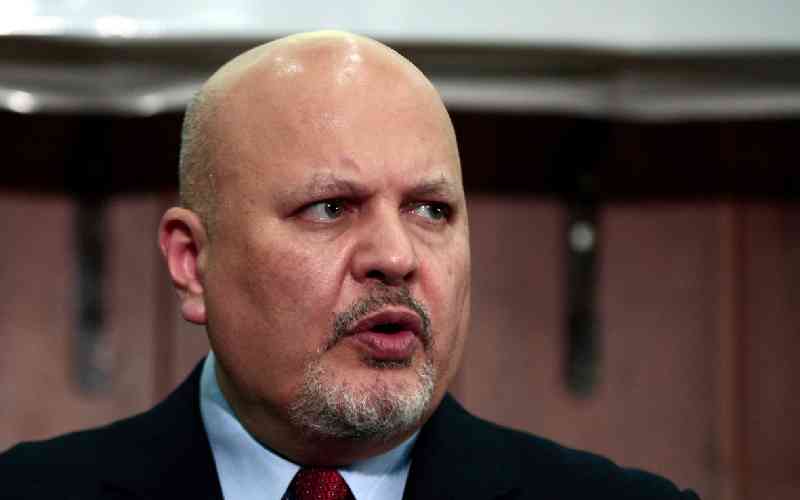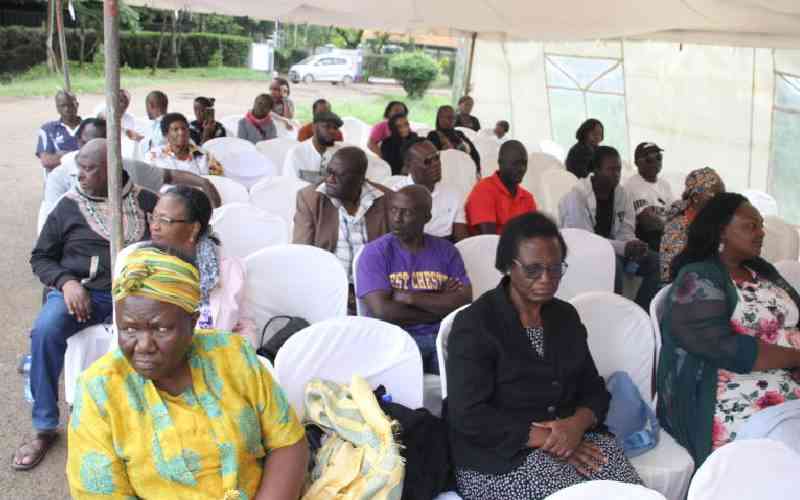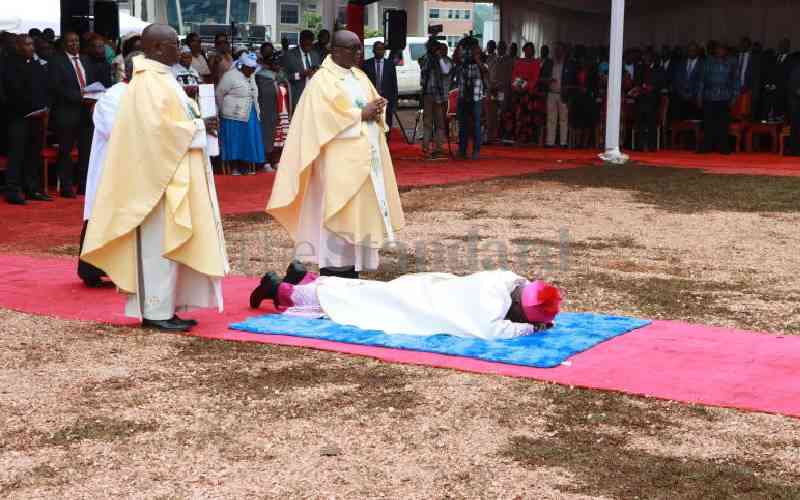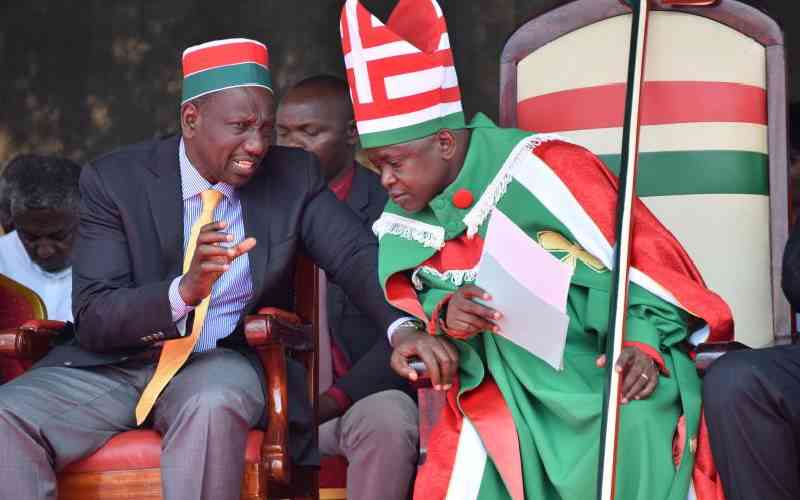Like walking on a tight rope in mid-air, President Kenyatta faced a tough dilemma when the International Criminal Court (ICC) ruled that he had to appear in person at the Hague status conference on October 8.
Though lawyers differ(ed) on the matter, failure to honour the summons could have attracted a warrant of arrest for President Kenyatta and Kenya could suffer sanctions by members of state of the Roman Statues for not cooperating with the Court.
Spoken words and unspoken actions can catalyse a crisis. A prolonged silence from the President whether or not he would honour the summon threatened to create a crisis as debates laced with rumours, and speculations raged at national and international level with one side in support of the president attending the conference and the other strongly opposed to it. All these were warning signs of crises for Kenya.
President Kenyatta finally announced his decision to honour the ICC summons and attend the status conference in person, demonstrating that he abides by the rule of law. In a glamourous and pompous event, and by invoking article 147(3) of the Kenyan Constitution, he temporarily handed over power to his Deputy on October 7. This decision averted potential national crises.
This article gives a critical look at how President Kenyatta contained the various prodromes from turning into full blown crises by examining what he (and his advisers and associates) did right and what could have been handled differently to better manage the potential crises. Our reflections deviate from the political, legal, Public Relations and sensational standpoints that have already been fronted, and take a professional crisis communication approach as our point of argument.
What President Kenyatta did right?
The President’s handover speech was a crisis communication masterpiece. What is said, who says it, when, where and how it is said, are key factors to crisis containment. President Kenyatta’s personal delivery of his handover address to the nation was more effective than if he had done so by proxy. Making his speech at Parliament was a great location choice as it indirectly depicted the solemnness of the occasion. Furthermore, making his well-choreographed and calculated announcement at the eleventh hour before his departure gave no one space or time to argue about his decision. He had made his decision and was going. And of course, that it was televised live gave every person, Kenyan or otherwise, the opportunity to hear it first-hand.
What was not done right?
President Kenyatta was accompanied by a multitude of elected leaders and Cabinet Secretaries; meaning that some government business was interfered with and left unattended. The money used to finance their travel and hotel expenses could perhaps have been used to alleviate the suffering of Internally Displaced Persons (IDPs) who are still sleeping in make-shift tents as a result of the 2007/2008 Post Electoral Violence (PEV). This conflicted with the image that Mr Uhuru Kenyatta had created by placing national interest ahead of his personal ones when he decided to face the Hague Court on an individual level as a “personal challenge” and not as the Kenyan president.
Some of the President’s allies behaved disrespectfully. In particular, Nairobi Senator Mike Mbuvi “Sonko” and others donned T-shirts at The Hague with abusive language to the ICC to protest what they call harassment of Uhuru Kenyatta by the ICC. This caused uproar from social media users accusing “Sonko” and team of embarrassing the country on a global platform. This was negative publicity for Kenya and President Kenyatta, much like adding salt to the already injured national image. And since communication is both what is said verbally and/or non-verbally, the fact that the President has not reprimanded this behaviour allows for everyone’s imagination and conclusion regarding the boldness of these actors.
Conclusion
Since the ICC skeleton in our cupboard is likely to stay with us for a while, timely communication, planning, organisation, and relevant messaging from the President can provide an appropriate platform to avert potential crises to him or the nation. We do not only single out the ICC or President Kenyatta, but generally, a Crisis Communication Plan (CCP) should form an integral part of the day to day management activities of the President, Deputy President, or any corporate (person or organisation) who may be in similar or facing divergent crises.
The authors are COM 639X – Crisis Communication, MA students of Daystar University
Stay informed. Subscribe to our newsletter
 The Standard Group Plc is a
multi-media organization with investments in media platforms spanning newspaper
print operations, television, radio broadcasting, digital and online services. The
Standard Group is recognized as a leading multi-media house in Kenya with a key
influence in matters of national and international interest.
The Standard Group Plc is a
multi-media organization with investments in media platforms spanning newspaper
print operations, television, radio broadcasting, digital and online services. The
Standard Group is recognized as a leading multi-media house in Kenya with a key
influence in matters of national and international interest.
 The Standard Group Plc is a
multi-media organization with investments in media platforms spanning newspaper
print operations, television, radio broadcasting, digital and online services. The
Standard Group is recognized as a leading multi-media house in Kenya with a key
influence in matters of national and international interest.
The Standard Group Plc is a
multi-media organization with investments in media platforms spanning newspaper
print operations, television, radio broadcasting, digital and online services. The
Standard Group is recognized as a leading multi-media house in Kenya with a key
influence in matters of national and international interest.

